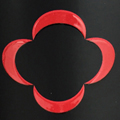Amorim
by
Terry Sullivan
 Summary: While in Alentejo, we stopped by an Amorim cork factory. This is one of the factories that the company has in Portugal. Amorim is the largest producer of bottle stoppers for the wine and spirits industries.
Summary: While in Alentejo, we stopped by an Amorim cork factory. This is one of the factories that the company has in Portugal. Amorim is the largest producer of bottle stoppers for the wine and spirits industries.
Amorim is a family controlled company. The fourth generation of the family has the controlling shares of the company.
Cork Oak Trees
On our fifth day of our wine journey through Portugal, we entered the Alentejo region. As our bus glided through the countryside, we observed many cork oak trees on our way to one of Amorim Cork Factory facilities where the stacked cork bark is treated and sorted. The cork oak tree is a distant cousin of the oak trees used to craft oak barrels for wine. These trees in Alentejo are among the many cork trees that grow in the Western Mediterranean Basin. The cork tree or Quercus Suber L. grows in sandy soils that are free of chalk. The tree requires high potassium levels and low nitrogen and phosphorus levels. The trees require 16” to 32” of rainfall per year and thrive in temperatures with an annual range between 23ºF to 104ºF.
 During a cork oak tree’s lifespan, it can grow up to 66 feet tall over 200 years. The life span of cork trees ranges between 150 and 250 years, although some are older. After the tree is 25 years old, the bark 4.25 feet above the ground is allowed to be stripped from the tree. The cork from this stripping is not used for wine bottle stoppers, rather it is used for the manufacture of a myriad of other products.
During a cork oak tree’s lifespan, it can grow up to 66 feet tall over 200 years. The life span of cork trees ranges between 150 and 250 years, although some are older. After the tree is 25 years old, the bark 4.25 feet above the ground is allowed to be stripped from the tree. The cork from this stripping is not used for wine bottle stoppers, rather it is used for the manufacture of a myriad of other products.
Cork harvesters must wait nine years to harvest cork from the tree again. Cork oak trees are harvested by hand every nine years beginning at 25 years old, then at 34 years, 42 years etc. Harvest takes place between the months of May and August. Two men can harvest a tree in five to ten minutes. It is not until the third harvest at the tree’s age of 42, that the cork is suitable for producing bottle stoppers.
Tour
 Joana Mesquita (Public Relations) greeted our group. She led us to a conference room where we learned about the cork industry. Joana said, “The bottle and cork influence the wine; hopefully in a positive way.” Joana went on to describe cork “as the butler of the wine industry.” During the presentation we learned that Portugal is the largest producer of cork representing 50% of the world’s supply. The country has 75% of the world’s production of cork products.
Joana Mesquita (Public Relations) greeted our group. She led us to a conference room where we learned about the cork industry. Joana said, “The bottle and cork influence the wine; hopefully in a positive way.” Joana went on to describe cork “as the butler of the wine industry.” During the presentation we learned that Portugal is the largest producer of cork representing 50% of the world’s supply. The country has 75% of the world’s production of cork products.
Amorim is the largest cork producer; however, they do not own any cork trees. Amorim produces cork stoppers, five billion a year. The cork chosen for cork stoppers must be very good. Joana explained, “If you see cork in shoes, flooring and other products, it’s because it was not good enough to go into a bottle.”
 Our tour proceeded outside where we saw many stacks of cork slabs aging. The cork remains in stacked piles for one year. After a year, the cork is placed on a metal pallet. A forklift moves the pallet to an area with boiling water. The pallet is slowly lowered into the boiling water and boiled. We observed the boiling process. The boiling water makes the cork flat and lean. After cooling the cork is graded for use. The more compact it is, the better is its use for cork stoppers.
Our tour proceeded outside where we saw many stacks of cork slabs aging. The cork remains in stacked piles for one year. After a year, the cork is placed on a metal pallet. A forklift moves the pallet to an area with boiling water. The pallet is slowly lowered into the boiling water and boiled. We observed the boiling process. The boiling water makes the cork flat and lean. After cooling the cork is graded for use. The more compact it is, the better is its use for cork stoppers.
For the cork that is judged good enough for wine bottle stoppers, there is a range from good to best. The range in corks should match the range in wine prices. Expensive wines should have the best corks. As we walked through the factory, workers were grading the cork. They would pick up the cork, inspect it, sometimes cut it and place it in a pile depending on its grade. Cork used for wine bottles are sent to another Amorim factory where the cork bottle stoppers are produced.
 The cork that is does not reach the high standards for wine bottle stoppers is used in many other industries. Artists use cork in making jewelry, fashion accessories and even photo frames. Cork is used in the furniture industry such as the bar stools in the wine room at The Yeatman hotel. Cork, when combined with rubber, can withstand pressure and deterioration. This is an ideal use for the automotive industry. Construction and the aerospace industries are also using cork.
The cork that is does not reach the high standards for wine bottle stoppers is used in many other industries. Artists use cork in making jewelry, fashion accessories and even photo frames. Cork is used in the furniture industry such as the bar stools in the wine room at The Yeatman hotel. Cork, when combined with rubber, can withstand pressure and deterioration. This is an ideal use for the automotive industry. Construction and the aerospace industries are also using cork.
It was interesting to learn the process from growing to harvesting cork oak trees. Cork is a sustainable, natural resource. In the factory, we observed many trained workers concentrating on grading and evaluating the cork. Each worker appeared experienced with their role of preparing the cork whether it was using the forklift to move stacks of cork, operating the boiling machinery or selecting and judging the quality of the cork slabs.
Article written April 2018.
Please support the following.
 |
||||
|
Portugal |
Spain and Portugal |
SmoothRed London, England, United Kingdom |

